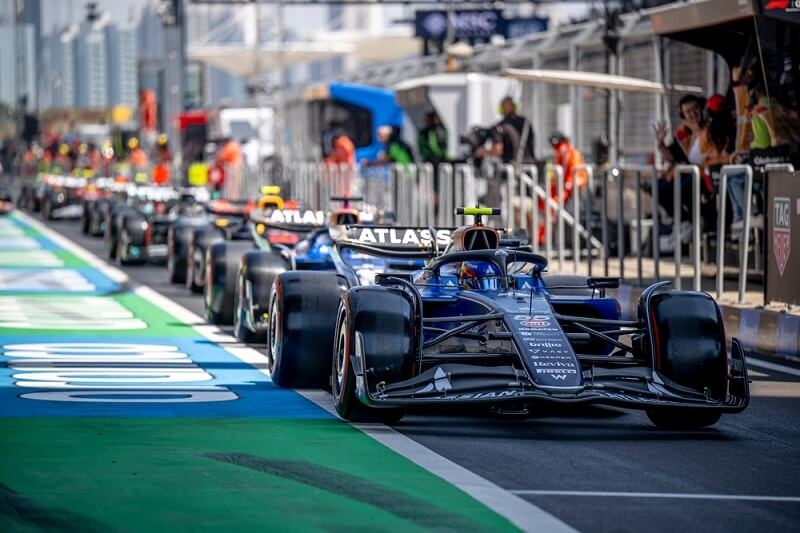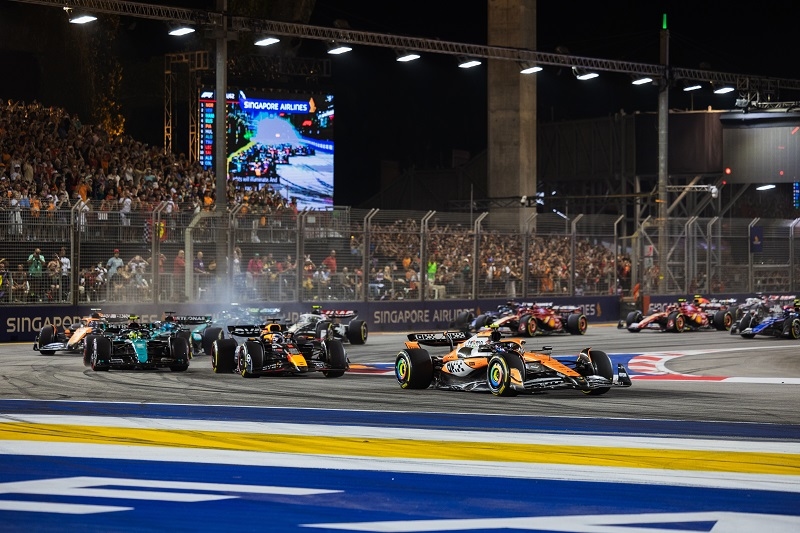Teams Raise Las Vegas Grand Prix 2023 Concerns: What To Know

The introduction of the Las Vegas Grand Prix to the Formula 1 calendar from November 16-18, 2023, has been met with a combination of excitement and apprehension. While the idea of racing in the glitzy, neon-lit backdrop of the Las Vegas Strip is tantalizing, several teams have voiced concerns about the new addition to the racing calendar.
Mercedes trackside engineering director Andrew Shovlin said, "It'll just depend on exactly how cold it is. Because if the track is down in single figures, that's often a region where you go winter testing. You do a run, it's very difficult for the tires to either get them switched on, or there may be graining and things. And then sometimes you just wait until it warms up a bit. So actually having to sort of race and qualifying in those conditions it will be interesting. You just try and identify the risks with the new circuit, work out what your contingencies will be, and whether you need any sort of specific car spec to deal with that. And we're going through that at the moment. But as I said, if it's at the very cold end of predictions, it's difficult to know how the tires are going to work."
Heat & Climate Concerns
The Nevada desert's unforgiving heat is a notable challenge in Las Vegas. Racing cars are precision machines sensitive to temperature changes. Prolonged exposure to high temperatures can affect performance, increase the risk of component failure, and potentially compromise safety. Tires, in particular, can behave unpredictably under extreme heat, leading to concerns over tire degradation and unexpected blowouts. Teams will have to recalibrate strategies, balancing the need for speed against the demands of a challenging environment. Records show that during mid-November, nighttime temperatures can plummet to a chilly five degrees. Many teams are wary of this, given that Friday's qualifying is scheduled to commence at midnight Nevada time, and Saturday's race is set to kick off at 10 PM. If there's a need for a race restart or in the event of a red flag, the event might extend beyond midnight. The cold could lead to issues with the tires, potentially hindering F1 cars from performing at their best, particularly during the outset of the qualifying laps.
AlphaTauri chief race engineer Jonathan Eddolls said, The temperatures are going to be probably one of the biggest challenges. I think we're expecting circa 10C of ambient, so very much like the winter test. For many years, we've done winter tests in Barcelona at those sorts of temperatures. So it's not going to be completely new to us. But definitely, it's quite a step away in terms of where we're going to be operating the current tires to what we're used to in a normal season.
Haas Director of Engineering Ayao Komatsu said, "It's a very different temperature window, so we've got to get the tires to work. But if I had to choose hot or cold, I'd choose cold conditions at this minute! So, hopefully, we can get it to work. I think it'll be a big challenge for us, especially our team, with the tools we've got in terms of pre-event simulation, more limited compared with, let's say, Mercedes."
Logistical Challenges & Track Design
The logistical aspects of adding another race in the United States, in addition to the already existing United States Grand Prix in Austin, Texas, pose some challenges. The teams, already battling with a packed calendar, will now need to shuffle resources, personnel, and equipment across vast distances in a short time frame. This also puts added pressure on the team's supply chain, ensuring all parts and equipment reach the destination in time and in perfect condition.
The Las Vegas Grand Prix will have a high-speed circuit interspersed with tight corners characteristic of street races. Such configurations can be challenging as they require cars to switch between high-speed straights and slow corners frequently, demanding a lot from the braking systems. The unforgiving nature of street circuits, with barriers close to the track, leaves little room for error, increasing the risk of accidents. But Lando Norris has got a virtual experience of the track, and he has given his approval.
Distractions Galore & Commercial Considerations
Las Vegas is synonymous with entertainment. The city's relentless energy can be a potential distraction for drivers and team members. Ensuring that everyone remains focused on the race, amidst the lure of casinos, shows, events, and other hospitality experiences, is a challenge team managers will face. With the addition of the Las Vegas Grand Prix, there are concerns over market oversaturation. The U.S. will now host multiple races, and teams are worried about the dilution of brand value and the impact on sponsorship deals. Balancing the commercial interests while ensuring the races maintain their unique charm and attraction is a tightrope the organizers will have to walk.
Las Vegas is a city that sees a large number of tourists every year. Handling the influx of F1 fans, in addition to regular tourists, will be a challenge. Concerns about transportation, accommodation, and traffic congestion need to be addressed to ensure a smooth experience for everyone involved. While large events can stimulate local economies, they can also disrupt the daily lives of local communities. The noise, road closures, and influx of visitors can be both a boon and a challenge. It's essential for organizers to work closely with local communities, ensuring that they too benefit from the Grand Prix and aren't just sidelined spectators to the extravaganza.
The Spectator Experience
While Las Vegas promises a visual spectacle, there are concerns about the actual race-viewing experience for fans. Street circuits, by design, have limited vantage points, potentially restricting spectator views. Ensuring that fans get a wholesome experience, both in terms of race viewing and additional entertainment, will be crucial for the success of the event. The potential of racing at night on the Las Vegas Strip is enticing. It would blend with the city's nocturnal lifestyle and offer a unique visual experience for both attendees and global viewers. However, this poses questions: Will teams have to adjust to unusual racing hours? How will the artificial lighting affect driver visibility and car performance?
The addition of Las Vegas, a city with strong commercial allure, may bring forth the discussion of whether F1 is making decisions based on genuine racing interest or commercial pressures. Purists argue that racing should be about challenging tracks and driver skills, not necessarily where the largest audience or the most significant sponsorship money is. How will F1 ensure that the Las Vegas Grand Prix doesn't tilt too far towards commercial interests at the expense of authentic racing?
Environmental & Health Concerns
While Formula 1 has made strides towards sustainability with initiatives like the commitment to becoming carbon neutral by 2030, racing in a desert environment might be seen as a step back. Concerns about the event's environmental impact, from the strain on local resources to the carbon footprint of hosting such a massive event, have been raised.
Beyond the obvious concerns related to the desert heat, the hustle and bustle of Las Vegas can be mentally taxing. Noise, lights, and the city's restless energy might affect team members' sleep patterns, concentration, and overall well-being. It's essential to ensure that all team members, from drivers to engineers, are shielded from potential health risks.
This content was created by AI




